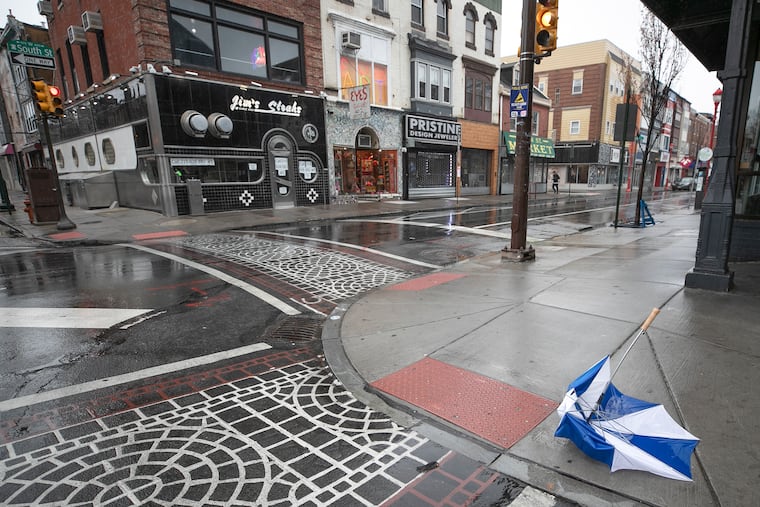Here are technologies that restaurants are using to survive COVID-19 and the winter
Key technology starts with the cash register and includes safety and cloud-based online ordering software that lets restaurants bypass DoorDash and other services. And don't forget the phone.

We all know that this year has been extremely difficult for the restaurant industry and, with cases rising and no end to the coronavirus pandemic in sight, it looks as if this winter is going to be very difficult.
Consumer spending is down, operating costs as a percentage of revenues are high, and staffing levels remain below normal. Many restaurants have closed, according to a recent report from the National Restaurant Association, and the industry is on track to lose $240 billion in sales by the end of the year.
But the restaurant operators who are navigating through this crisis are relying on technologies — new and old — to provide a safe environment for customers and an efficient way to control costs.
“The trend this year has been toward more technology both in the front-of-the-house and in the back-of-house,” says Vanessa Sink, National Restaurant Association’s director of media relations.“
So what technologies are proving to be the most important? The first is the cash register.
“We instituted a whole new point of sale system that enables us for more streamlined and distance service,” says Cory MacDonald, director of operations at 2nd Story Brewing in Old City. “Additionally we added in QR codes that enable us to reduce contact and maintain distances.” A QR code is a type of matrix bar code that serves as an optical label containing information — like a menu — and which can be read by most smartphone cameras.
McDonald’s is one of many restaurateurs that have taken the opportunity to upgrade or replace their existing point of sale systems. Some popular in-store systems such as Square, Revel, Clover, and Presto now come with self-service kiosks. They support most major credit card and mobile payment systems, can integrate with online ordering platforms, and are now offering contactless payment and QR code functionality to minimize the use of physical menus.
Presto offers what it calls a “contactless dining kit,” which supports all of these capabilities. It also includes tablets, placards, and QR code stickers for guests to view menus, which managers can easily edit using an online portal.
» READ MORE: Outdoor heaters are the hot accessory as it gets colder. Here’s how to buy one.
Safety is a priority, so logging in visits by outsiders — vendors and food suppliers — is an important way to keep track of everyone who comes in and out of the kitchen and supply areas. With advanced detectors and artificial intelligence-based algorithms, some firms are even offering on-premise screenings and remote technology tools to help restaurateurs maintain a safe environment.
Zero Hour Health, a Connecticut-based firm, offers an application that performs temperature screening, facial recognition, and thermographic cameras to detect elevated skin-surface temperatures. The company’s customers can also use an app where employees can do a “wellness check” before they come to work (failing the checkup results in an appointment with the company’s clinical team for further assessment).
Another application, Zenput, is used by restaurants nationwide to improve their operations by automating and tracking safety practices. The application enforces employee compliance with safety rules so that costly mistakes can be avoided and health risks are minimized.
Making food available to as wide a channel as possible has been critical during the pandemic. And many restaurateurs have developed a newfound respect for the many mobile order delivery service platforms, such as DoorDash, Caviar, Uber Eats, and Grubhub. It’s a critical source of revenue, particularly as the number of eat-in customers is limited.
» READ MORE: Need comfort food right now? Chefs’ picks for takeout and delivery in Philly
Jim’s Steaks on South Street generally had long lines around the corner for its cheesesteaks, but that practice has been curtailed because of the pandemic. So the steak shop’s owners have leaned heavily on the internet. “We have enhanced our delivery visibility with DoorDash click-through on our website and other social media outlets,” Ken Silver, the restaurant’s president, says. “Our DoorDash volume has increased 400 percent since the March shutdown, and it continues to improve.”
For those restaurants looking to combine reservation and takeout orders, OpenTable and Tock have grown in popularity.
Restolabs, a cloud-based online ordering software, has found traction with small and medium establishments in the U.S. who prefer to manage their online ordering themselves. The platform offers a wide array of features from social media ordering to inbuilt marketing tools and a seamless order management system at competitive pricing.
All of these technologies have proven valuable. But even with contactless payments, QR codes and mobile ordering, there’s still one technology that’s remained most important: the telephone.
“If we did not have the phone to personally connect with humans and answer their unique questions and concerns, we would be nowhere,” says Aimee Olexy, co-owner and founder of The Love on 18th Street in Center City. “The phone has been the most valuable socially distanced tool to prepare, comfort and, connect. It’s fast, it’s personal, it is real, and it extends the number of people involved in the conversation."
The pandemic has accelerated the use of technologies — even old school ones — by restaurateurs and patrons. So how many of these practices will carry forward? I’m betting these techs will be in common use long after we finally say goodbye to this virus.
Gene Marks is a certified public accountant and the owner of the Marks Group, a technology and financial management consulting firm in Bala Cynwyd.